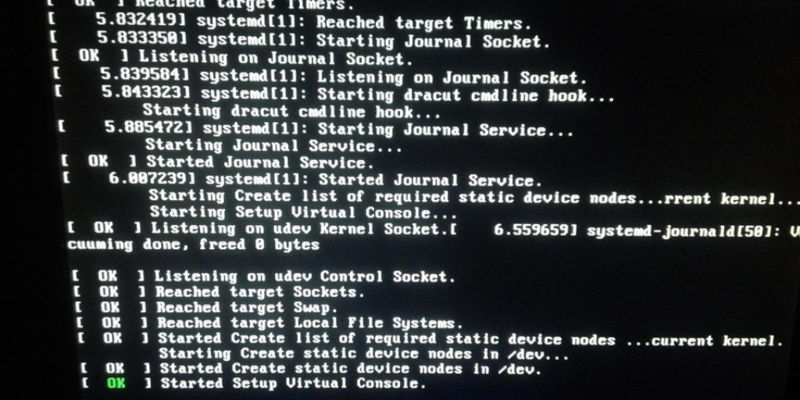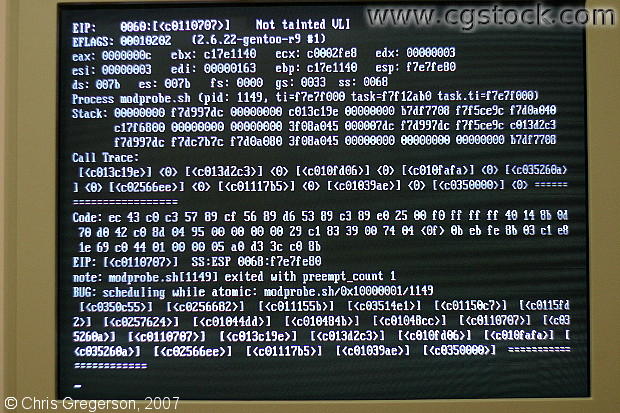Table of Contents
PC running slow?
You may encounter an error about udev being the gentoo core. There are a number of steps you can take to resolve this issue. We will return to this shortly.
udev /dev) (The user is the systemd device manager for the Linux kernel type. It manages device nodes through /dev and manages all userspace choices when devices are added or removed.

The existing sys-fs/udev system is used as the default device manager for Gentoo systems using OpenRC, a sort of systemd-independent init system.
What Counts As Udev?
The /dev Directory
Most Linux buyers understand that /dev/sda1 is just a superfast path, referring to the first partition on the first disk that the main kernel finds. Is it more or less?
But just think about hot-swap devices like USB, IEEE 1394, hot-swap PCI, etc. What is the first device for each of these devices? And how long? What will other devices be called when the first one disappears? How does this affect current transactions? Wouldn’t it be funny if the print job suddenly switched from a high-end laser printer?Entering an almost dead dot matrix printer just because an employee decided to turn off the laser printer (which just happened). just be the first printer)?
Go to Device Manager. A modern control device (including udev during eudev) should:
- Run in user space.
- Dynamically create distance and material files.
- Ensure consistent device names.A
- Provide a user-space job application interface (API).
Whenever there is a change in the device structure, the kernel unloads a uevent, which is retrieved and captured by the device manager. The device manager follows rules that are often declared in the /etc/udev/rules.d, /run/udev/rules.d, and /lib/udev/rules.d directories. Based on your information in the uevent, the software finds the rules that need to be activated directly and takes the necessary action. These actions may include creating or deleting devices and files, and may cause certain firmware files to fail to load Preferably in kernel memory.
Settings
Important
When upgrading udev, refer to the complete udev upgrade guide for information that can sometimes prevent systems from booting.
Kernels
General configuration ---> [*] Setting default kernel factors (advanced users) ---> [ ] Enable deprecated sysfs functions to support deprecated user space tools. [*] Enable signalfd() system callCurrently enable lock level ---> [*] Blocklayer SG v4 supportNetwork provides ---> Network Technology ---> <*> Unix domain socketsDevice Driver ---> General Driver Options ---> () uevent helper path [*] Keep a running devtmpfs filesystem in the /dev folder < > Support ATA/ATAPI/MFM/RLL (DEPRECATED) --->Apply ---> [*] Notify userspace support pseudo file systems ---> [*] /proc support for file devices [*] sysfs file system support
USE Flags
Portage is aware of the USE flag udev to enable udev support in other packages. Adding this flag valueUSE to the USE list flag (default in all Linux profiles) will automatically extract the virtual/udev product:
PC running slow?
ASR Pro is the ultimate solution for your PC repair needs! Not only does it swiftly and safely diagnose and repair various Windows issues, but it also increases system performance, optimizes memory, improves security and fine tunes your PC for maximum reliability. So why wait? Get started today!

Appearance
After setting the USE flags, update the system for the changes to take effect:
Configuration
Service

To start udev on boot, add it to the sysinit runlevel. This can be created by running the following command with basic permissions:
Advanced Settings
Rules
udev provides a set of rules corresponding to exported ueevents (kernel-provided events) and properties associated with the discovered device. A proper rule among bodybuilders might be to name and create a gadget node and run customized programs to further customize the device.
- /lib/udev/rules.d/ – rules in directories of this type are set by special packages, some should not be changed by ordinary users;
- /etc/udev/rules.d/ – This folder is for rules written by the end user. Any new rules must be added to this directory;
Thisin their directories, several theory files with a suffix (with .rules) are searched for in alphanumeric order. In any case, udev will find expressions in the rules files that might correspond to an important uevent event, as well as a state that needs to be negotiated (i.e. uevent like a device is constantly being added or removed), and a command to execute directly.
- UEVENT event SUBSYSTEM (on which device the uevent event is fired);
- ACTION performed (add, modify, optionally delete);
- One or more attributes (via ATTR ATTRS) or device class, service provider, or other device information;
- Theme provided by the kernel (via KERNEL), such as sd* (for SCSI/SATA hard drives) or input* (for input devices such as mice and keyboards);
- One or more environments (via ENV) used to send information about multiple rules.
- Some information should be passed with subsequent events (via environment variables)
- Links must be created in /dev
- Commands must be executed
Udev does this for every matching idea (itdoes not stop as soon as the first match is found) to provide a flexible approach to device management.
Permanent Device Names
The kernel fetches devices asynchronously, udev copies the kernel’s sysfs filesystem, so the devices are synchronized and numbered in the order they are discovered. By default, udev does not provide permanent method names. However, there are mechanisms that allow certain device classes to provide these elements:
- Udev creates additional symlinks to get storage devices based on the full device ID, label, UUID, and path. See /dev/disk/by-* directory. So instead of choosing the /dev/sda device file, for example, use the /dev/disk/by-label/SOME_LABEL database.
- Same input for devices in /dev/input.
- Using custom rules, fans can create files on their devices.
Use Interesting And Predictable Names For Network Interfaces
The new name of the network graphical interface is non-standard. So the symbolprivate links used by netifrc want to be relinked. Use /etc/init.d/net.lo as a new reference for the target interface names to add. Make sure you can replace
Udev Gentoo 커널에 대한 해결 방법
Obejście Dotyczące Jądra Udev Gentoo
Soluzione Alternativa Quando Si Considera Il Kernel Udev Gentoo
Solução Quando O Kernel Do Udev Gentoo
Solución Para El Núcleo Udev Gentoo
Workaround Für Udev Gentoo Kernel
Oplossing Om Udev Gentoo-kernel Te Ontvangen
Lösning För Udev Gentoo Kärna
Solution De Contournement Pour Le Noyau Udev Gentoo
Обходной путь для получения ядра Udev Gentoo